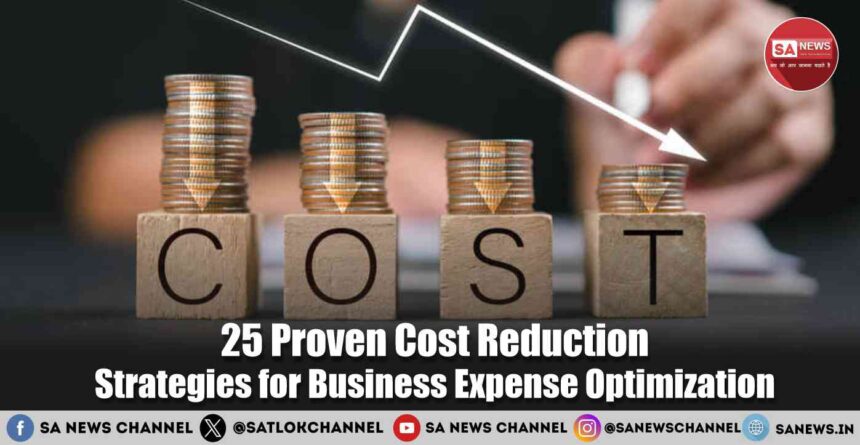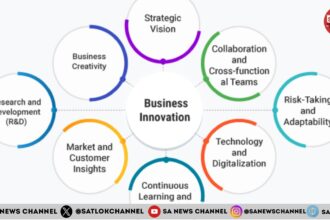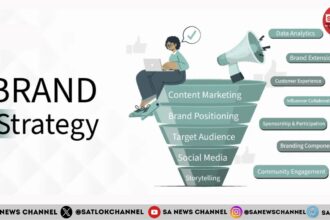“Beware of little expenses; a small leak will sink a great ship.” — Benjamin Franklin
Running a business today requires careful expense management and strategic cost-cutting measures. In today’s competitive marketplace, effective cost reduction strategies aren’t just about surviving tough times—they’re about building operational efficiency and stronger profit margins for sustainable growth. Well-implemented expense optimization techniques can transform your business from struggling to thriving.
This comprehensive guide shares 25 proven cost reduction strategies that can help you optimize expenses without compromising quality or growth. From operational efficiency improvements to zero-based budgeting approaches, these expense management techniques have worked for companies of all sizes across multiple industries. They can help you reduce overhead expenses, manage variable costs better, and build a more financially resilient business.
Understanding and Analyzing Your Current Business Expenses
Before implementing any cost-cutting measures, you need a clear picture of where your money is going. Effective expense optimization begins with thorough analysis of your current spending patterns across all cost categories.
Track All Your Direct and Indirect Costs
Start by documenting every expense in your business operations. This comprehensive audit should include:
- Fixed costs like rent, utilities, and insurance premiums
- Variable costs such as supplies, shipping, and hourly labor
- Operating expenses (OpEx) including administrative expenses
- Capital expenditures (CapEx) for long-term investments
- Marketing and advertising costs across all channels
- Travel and entertainment expenses for staff and clients
- Payroll and benefits packages for all employees
- Software subscriptions and technology investments
Keep detailed records for at least three months to establish accurate spending patterns. Many business owners discover surprising expense patterns that offer immediate cost reduction opportunities once properly tracked.
Implement Activity-Based Costing (ABC)
Activity-based costing goes beyond traditional accounting by assigning costs to specific activities and processes. This detailed approach helps you:
- Identify which business activities consume the most resources
- Determine the true cost of producing each product or service
- Find hidden expenses that traditional accounting might miss
- Make more informed decisions about pricing and process improvements
According to a study by the Institute of Management Accountants, companies implementing ABC systems typically identify cost-saving opportunities equivalent to 3-5% of their total expenses within the first year.
Categorize Expenses for Strategic Analysis
Organize your expenses into clear categories for better expense management. Standard financial categories include:
- Fixed costs (unchanging regardless of production volume)
- Variable costs (changing with production or sales volume)
- Semi-variable costs (containing both fixed and variable elements)
- Cost of Goods Sold (COGS) directly related to production
- Overhead expenses not directly tied to production
This categorization allows you to perform break-even analysis and understand which expense areas offer the greatest potential for cost reduction strategies.
Strategic Approaches to Operational Efficiency
Improving operational efficiency represents one of the most sustainable paths to long-term cost reduction. These strategies focus on process improvement and operational excellence.
1. Implement Lean Management Principles
Lean management focuses on eliminating waste while delivering more value to customers. Key lean principles include:
- Identifying value from the customer’s perspective
- Mapping your value stream to eliminate non-value-adding activities
- Creating smooth workflow with minimal interruptions
- Establishing pull-based systems that respond to actual demand
- Pursuing continuous improvement through Kaizen practices
Organizations implementing lean management techniques typically report 15-30% reductions in operational costs according to research from the Lean Enterprise Institute. Start by identifying and eliminating the eight common types of waste: defects, overproduction, waiting, non-utilized talent, transportation, inventory, motion, and excess processing.
2. Adopt Zero-Based Budgeting (ZBB)
Unlike traditional budgeting that uses last year’s budget as a starting point, zero-based budgeting requires justifying every expense from scratch. This approach:
- Forces critical evaluation of all expenses, not just new ones
- Eliminates legacy spending that no longer serves business needs
- Aligns resources with current strategic priorities
- Identifies opportunities to reduce costs by 10-25% in non-strategic areas
Deloitte research shows that companies using ZBB achieve cost reductions of 10-15% in the first year and maintain lasting expense discipline. While implementing ZBB requires more time upfront, the long-term savings often justify the investment.
Also Read: A Critical Analysis of Technology Adoption in Small Businesses: Opportunities and Limitations
3. Embrace Digital Transformation and Paperless Operations
Going digital does more than save on paper costs—it transforms entire workflows and improves operational efficiency. Consider these digital cost-cutting measures:
- Implement cloud-based document management systems
- Use electronic signature solutions for contracts and agreements
- Deploy enterprise resource planning (ERP) systems for integrated operations
- Utilize digital invoicing and payment processing
- Develop customer self-service portals for common requests
Beyond direct material savings, digital transformation typically reduces labor costs through improved productivity. One manufacturing company reported 35% lower administrative expenses after going paperless, plus faster order processing and fewer errors.
4. Review and Renegotiate Vendor Contracts
Vendor negotiation represents one of the quickest paths to meaningful cost reduction. Many businesses accept current supplier rates without question, but most vendors have room to negotiate, especially for loyal customers.
Effective vendor management strategies include:
- Scheduling regular contract reviews every 6-12 months
- Researching market rates before negotiations
- Consolidating purchases with fewer suppliers for volume discounts
- Exploring early payment discounts with key vendors
- Negotiating longer-term contracts with price protection clauses
Harvard Business Review research indicates that systematic vendor negotiations typically yield savings of 8-12% on direct materials and 10-15% on indirect purchases. One healthcare organization saved over $3.2 million annually through structured vendor reviews.
5. Optimize Supply Chain Management
Supply chain optimization combines process improvement, inventory management, and vendor relationships to reduce costs throughout your procurement and distribution networks.
Key supply chain optimization strategies include:
- Conducting regular supply chain audits to identify inefficiencies
- Implementing just-in-time inventory systems to reduce carrying costs
- Developing stronger relationships with key suppliers for better terms
- Using data analytics to forecast demand more accurately
- Exploring alternative logistics and shipping options
According to McKinsey research, companies with optimized supply chains typically reduce supply chain costs by 15-20% while improving customer satisfaction through more reliable delivery.
Remote Work and Workforce Optimization
Labor costs often represent the largest expense category for businesses. These strategies help manage payroll and benefits expenses while maintaining team productivity.
6. Implement Remote Work Policies
The shift toward remote work offers significant cost-cutting opportunities beyond the pandemic-era necessity. Consider these benefits:
- Reduced office space requirements and lower rent costs
- Decreased utility bills and facility maintenance expenses
- Lower office supply and equipment expenditures
- Expanded hiring pool without geographical limitations
- Improved employee satisfaction and retention
Studies by Global Workplace Analytics show that businesses save an average of $11,000 annually for each employee who works remotely half-time. Even hybrid models with partial remote work can significantly reduce overhead expenses.
7. Strategic Outsourcing and Offshoring
Not every business function requires in-house talent. Strategic outsourcing allows you to:
- Focus internal resources on core business functions
- Access specialized expertise without full-time salary commitments
- Scale resources up or down based on business needs
- Reduce training and onboarding costs
- Eliminate the overhead expenses associated with additional employees
Commonly outsourced functions include:
- Administrative and data entry tasks
- Accounting and bookkeeping
- IT support and development
- Customer service and call centers
- Marketing content creation and management
Deloitte’s Global Outsourcing Survey found that 59% of companies use outsourcing as a cost-cutting tool, with average savings of 15% on outsourced functions.
8. Implement Cross-Training and Skill Development Programs
When employees can perform multiple roles, you gain operational flexibility while reducing staffing costs. Effective cross-training:
- Minimizes the need for temporary staff during busy periods
- Ensures business continuity during absences or vacations
- Reduces downtime as team members can shift between tasks
- Creates a more engaged and versatile workforce
- Identifies future leaders with diverse operational knowledge
Start by mapping complementary skills across different positions, then create structured training opportunities. Manufacturing firms implementing cross-training programs report productivity increases of 12-18% alongside reduced labor costs.
9. Optimize Your Benefits Package Through Value Analysis
Employee benefits represent a significant expense, but not all benefits deliver equal value. Function cost analysis of your benefits package can identify opportunities to:
- Eliminate underutilized benefits that few employees value
- Replace high-cost benefits with more affordable alternatives
- Implement flexible benefit options that allow employees to choose
- Negotiate better rates through benefit provider consolidation
- Explore tax-advantaged benefit structures
A Society for Human Resource Management survey found that 72% of employees value flexibility in their benefits package over specific high-cost items. This preference creates opportunities to simultaneously reduce costs while improving employee satisfaction.
Energy Efficiency and Resource Optimization
Sustainable business practices often align perfectly with cost reduction goals. These strategies reduce both environmental impact and operational expenses.
10. Invest in Energy-Efficient Equipment and Practices
Energy costs represent a significant expense for many businesses. Energy efficiency initiatives can deliver substantial savings through:
- Upgrading to ENERGY STAR certified equipment and appliances
- Replacing traditional lighting with LED systems (70-90% more efficient)
- Modernizing HVAC systems with programmable controls
- Installing occupancy sensors for lighting in less-used areas
- Upgrading insulation and weatherproofing in facilities
The U.S. Department of Energy reports that businesses implementing comprehensive energy efficiency programs typically reduce energy costs by 25-30%. While some upgrades require initial investment, many utility companies offer rebates and incentives that reduce payback periods.
11. Implement Waste Reduction Programs
Waste reduction goes beyond environmental responsibility—it delivers direct financial benefits. Consider these approaches:
- Conducting waste audits to identify major sources of waste
- Implementing recycling programs for paper, packaging, and equipment
- Adopting reusable alternatives to disposable products
- Training staff on waste reduction best practices
- Exploring opportunities to sell or repurpose byproducts
Manufacturing companies implementing zero-waste initiatives typically report cost savings of 3-5% on materials and waste disposal. One food processing company reduced waste disposal costs by 40% while generating new revenue from previously discarded byproducts.
12. Optimize Space Utilization
Real estate typically represents one of the largest fixed costs for businesses. Optimizing your space utilization can:
- Reduce rent or mortgage expenses through downsizing
- Lower utility costs with a smaller footprint
- Decrease maintenance and cleaning expenses
- Improve workflow efficiency through better layout
- Create opportunities for subleasing unused space
With the rise of hybrid work models, many businesses are reducing their office footprint by 30-50% through hot-desking, shared workspaces, and more efficient layout designs. Even retail and manufacturing operations can benefit from regular space utilization analyses to identify underutilized areas.
Financial Management and Expense Control
How you manage money matters as much as how you earn it. These financial strategies focus on smarter spending and cash flow management.
13. Refinance Debt and Optimize Capital Structure
High-interest debt drains valuable cash flow. If interest rates have dropped or your business credit has improved, refinancing offers immediate savings opportunities:
- Consolidate multiple loans into one with better terms
- Convert high-interest debt to lower-rate options
- Restructure payment schedules to improve cash flow
- Explore SBA loan programs with favorable terms
- Consider alternative financing sources beyond traditional banks
Even a 1-2% reduction in interest rates can save thousands of dollars over the loan term. One small manufacturer saved $37,000 annually by refinancing their equipment loans and consolidating three separate credit lines.
14. Implement Robust Budgeting and Forecasting Processes
Better financial planning leads to better spending control. Strong budgeting and forecasting processes should include:
- Regular budget review meetings with department heads
- Variance analysis to identify and address spending anomalies
- Rolling forecasts that adjust to changing business conditions
- Cash flow projections to anticipate and prepare for challenges
- Scenario planning for different economic conditions
Companies with mature budgeting processes typically spend 25% less time on budget creation while achieving greater accuracy in their forecasts. This improved financial visibility helps prevent overspending before it occurs.
15. Maximize Tax Deductions and Credits
Many businesses overpay taxes by missing available deductions and credits. Work with a knowledgeable accountant to identify opportunities such as:
- Research and development tax credits for innovation activities
- Work Opportunity Tax Credit for hiring from certain groups
- Section 179 deductions for equipment purchases
- Energy efficiency tax incentives for building improvements
- State-specific tax incentives for job creation or investment
A study from the U.S. Chamber of Commerce found that small businesses overpay their taxes by an average of 11% due to missed deductions. Strategic tax planning can recover these funds while maintaining full compliance with tax laws.
16. Conduct Cost-Benefit Analysis for Major Expenditures
Before making significant purchases or investments, conduct thorough cost-benefit analysis to ensure positive return on investment (ROI). This process should:
- Quantify all direct and indirect costs of the expenditure
- Project realistic benefits and revenue impacts
- Compare multiple alternatives to find the best value
- Consider both short-term costs and long-term benefits
- Account for risk factors that might affect outcomes
Organizations that systematically conduct cost-benefit analyses report making better investment decisions and avoiding approximately 15% of expenditures that would have delivered inadequate returns.
Leveraging Technology for Expense Optimization
Technology investments, when strategically implemented, can dramatically reduce costs across multiple business areas.
17. Automate Routine Processes with Technology
Process automation delivers both immediate cost savings and long-term efficiency. Target these high-value automation opportunities:
- Customer relationship management and follow-up communications
- Inventory management and automatic reordering
- Employee onboarding and training processes
- Financial reporting and basic bookkeeping functions
- Social media and content scheduling
According to Forrester Research, robotic process automation typically delivers ROI within 12 months, with cost reductions of 25-50% in targeted process areas. One insurance company automated their claims processing workflow and reduced processing costs by 30% while improving accuracy.
18. Adopt Cloud Computing Solutions
Moving from on-premises systems to cloud computing solutions offers multiple cost advantages:
- Eliminated need for expensive server hardware and maintenance
- Reduced IT staffing requirements for system administration
- Pay-as-you-go pricing models that scale with actual usage
- Automatic updates and security patches without disruption
- Improved accessibility for remote and distributed teams
Gartner research indicates that organizations typically save 20-30% when migrating from on-premises infrastructure to cloud platforms. These savings come from both direct IT costs and productivity improvements.
19. Utilize Data Analytics for Expense Management
Data analytics tools help identify spending patterns and opportunities for optimization that might otherwise remain hidden. Consider using analytics to:
- Identify spending anomalies and potential waste
- Forecast future expense needs more accurately
- Compare performance across departments or locations
- Benchmark your costs against industry standards
- Simulate the impact of different cost-cutting scenarios
Companies using advanced analytics for expense management typically identify savings opportunities equivalent to 3-8% of their addressable spend, according to McKinsey research.
20. Implement Enterprise Resource Planning (ERP) Systems
Modern ERP systems integrate multiple business functions into a single platform, eliminating redundancies and improving operational visibility. Benefits include:
- Streamlined workflows across departments
- Elimination of duplicate data entry and associated errors
- Better inventory management with reduced carrying costs
- Improved financial visibility and reporting capabilities
- Enhanced decision-making through integrated data
While ERP implementation requires significant upfront investment, organizations typically achieve cost reductions of 10-20% in administrative functions and 5-15% in operational areas.
Continuous Improvement and Process Optimization
Long-term expense optimization requires ongoing attention and systematic approaches to efficiency.
21. Implement Six Sigma Methodology
Six Sigma provides a structured approach to process improvement focused on reducing defects and variability. When applied to expense management, Six Sigma helps:
- Identify root causes of excess costs and waste
- Develop standardized processes that minimize errors
- Create measurement systems to track performance
- Implement process controls to prevent cost overruns
- Drive continuous improvement in efficiency
Organizations implementing Six Sigma typically report cost savings of 15-25% in targeted process areas. While full implementation requires significant training, even basic Six Sigma principles can yield meaningful results.
22. Establish Regular Process Reviews and Kaizen Events
Continuous improvement requires regular evaluation of existing processes. Schedule:
- Quarterly process reviews with frontline staff
- Regular Kaizen events focused on specific cost areas
- Monthly variance analysis of budget versus actual spending
- Systematic benchmarking against industry standards
- Annual comprehensive expense audits
Toyota, pioneer of the Kaizen approach, attributes billions in cost savings to their culture of continuous improvement. Small, incremental changes compound over time to create significant efficiency gains.
23. Implement Value Engineering Principles
Value engineering systematically analyzes functions to achieve essential requirements at minimal cost. This approach:
- Questions whether each component is necessary
- Explores alternative ways to achieve the same function
- Evaluates the cost-to-value ratio of each element
- Eliminates aspects that add cost without proportional value
- Redesigns processes or products for greater efficiency
According to the Society of American Value Engineers, well-executed value engineering typically yields savings of 15-25% without sacrificing quality or functionality.
Top Expense Categories to Target
While all expenses deserve scrutiny, these areas typically offer the greatest savings potential.
24. Focus on High-Impact Expense Categories
Some expense categories consistently offer greater savings opportunities:
- Real estate and facilities costs (15-25% potential savings)
- Technology and telecommunications (20-30% potential savings)
- Professional services and consultants (15-20% potential savings)
- Travel and entertainment (30-40% potential savings)
- Office supplies and equipment (10-15% potential savings)
Start with these high-impact categories before moving to areas with smaller potential returns.
25. Address the Hidden Costs of Compliance and Regulation
Regulatory compliance creates necessary but often inefficient costs. Optimize compliance expenses by:
- Consolidating compliance functions across departments
- Investing in specialized compliance software
- Training multiple team members on compliance requirements
- Staying current with changing regulations to avoid penalties
- Engaging specialized consultants for complex requirements
While compliance itself isn’t optional, how you manage compliance processes can yield savings of 15-25% according to PwC research.
Expense Optimization Implementation Framework
Successful cost reduction requires a structured approach. Follow this proven implementation framework:
- Analyze current spending patterns and identify opportunities
- Prioritize initiatives based on potential impact and effort required
- Develop specific action plans with clear ownership and deadlines
- Implement changes systematically with appropriate change management
- Measure results against established baselines
- Adjust strategies based on performance data
- Institutionalize successful approaches through policy and training
This systematic approach ensures that cost reduction becomes an ongoing capability rather than a one-time event.
Frequently Asked Questions About Cost Reduction Strategies
What’s the difference between strategic cost reduction and simple cost-cutting?
Strategic cost reduction focuses on sustainable, long-term expense optimization aligned with business goals. Simple cost-cutting often makes across-the-board cuts that may damage value-creating activities. Strategic approaches analyze costs relative to their value contribution, cutting selectively while investing in high-return areas.
How do I prevent cost reduction efforts from hurting quality or customer satisfaction?
Start by clearly defining what matters most to customers, then protect those areas during cost reduction. Use metrics that track both cost and quality outcomes. Involve customer-facing employees in cost reduction planning to identify potential impacts. Finally, implement changes gradually with close monitoring of customer feedback.
Which cost reduction strategies deliver the fastest results?
For immediate savings, focus on:
- Vendor renegotiation (30-90 days)
- Subscription and service audits (15-30 days)
- Travel policy tightening (immediate)
- Overtime reduction through better scheduling (1-2 pay periods)
- Energy usage optimization (30-60 days)
These approaches can deliver meaningful savings within one quarter while longer-term strategies develop.
How do I maintain cost discipline after initial reduction efforts?
Sustainable cost management requires:
- Regular expense reviews built into your business rhythm
- Clear spending authorities and approval processes
- Ongoing training in cost management principles
- Recognition and rewards for cost-saving innovations
- Transparent reporting of spending patterns and trends
Building a cost-conscious culture ensures that expense management becomes part of your organizational DNA.
What role should technology play in expense reduction?
Technology serves three critical functions in modern expense management:
- Visibility – providing clear data on where money is spent
- Efficiency – automating processes to reduce labor costs
- Control – enforcing policies and approval workflows
Begin with systems that increase spending visibility before moving to more advanced automation and control technologies.
Beyond Efficiency: The Ultimate Cost-Saving Realization
True efficiency isn’t just about reducing operational waste—it’s about spending our limited time wisely. While lean practices and financial planning can optimize your business, what about the cost of a life misdirected? Chasing profits without understanding life’s purpose is the biggest loss. Spiritual wisdom brings unmatched clarity, balance, and peace. Books like Gyan Ganga and Way of Living (Jeene Ki Rah) by Saint Rampal Ji Maharaj reveal the deeper meaning of existence, true devotion, and the right way to live. Read them to discover the divine blueprint for a truly meaningful, spiritually efficient life.









